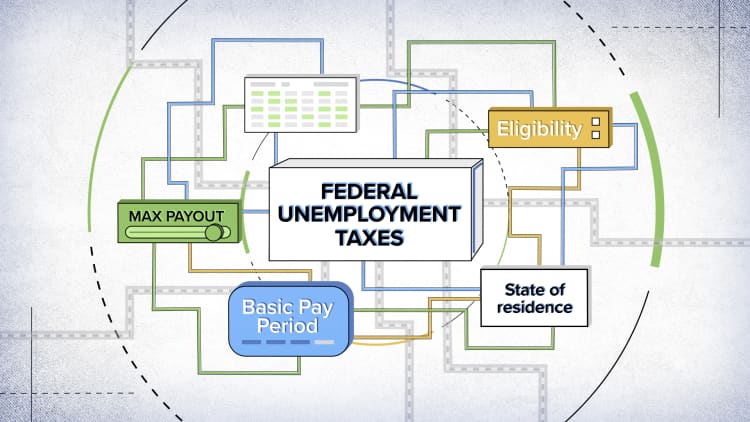
Weekly jobless claims hit their lowest level of the pandemic era, totaling 1.186 million last week, well below Wall Street expectations.
Economists surveyed by Dow Jones had been looking for 1.42 million. The level for the week ended Aug. 1 represented a drop of 249,000 from the previous period.
Amid worries that the employment picture was faltering after two record-breaking months of job creation, the claims number indicates some momentum. Continuing claims, or those who have collected benefits for two straight weeks, dropped by 844,000 to 16.1 million.
Markets reacted positively to the news, with Dow futures shaving almost all of their earlier losses as stocks looked to open about flat.
The last time the weekly claims number was this low was March 14, just as the coronavirus hit pandemic status and the U.S. economy came to a standstill in an effort to halt the spread. The totals since then have easily eclipsed anything seen before in records going back to 1967.
Even with this past week's improvement, the total remains well above the pre-pandemic record of 695,000 in 1982.
"Both initial and continuing claims are at extremely high levels, and indicate that many employers continued to lay off workers in July," PNC senior economist Bill Adams said in a note. "Further complicating the picture, the expiration of extended unemployment insurance benefits on July 31 may be clouding the signal from the claims data."
The four-week moving average, which smooths volatility in the numbers, fell by 413,250 to 16.6 million. But the damage to the labor remains deep and this was the 20th consecutive week that claims have run above 1 million.
The total of those claiming benefits, which lags the current data by two weeks, rose to 32.1 million as of July 18, an increase of 1.3 million from the previous week.
Pandemic Unemployment Assistance recipients declined to 655,707, a fall of 253,093 from the previous week as the program expired July 31. The program provided benefits to those who normally wouldn't be covered under traditional unemployment insurance. Congress and the White House are working on an extension of the program but have not reached an agreement yet.
The report comes a day ahead of the Labor Department's nonfarm payrolls release for July. Economists expect it to show growth of nearly 1.5 million, though Wednesday's private payrolls report from ADP, which showed a gain of just 167,000.
The past week's improved showing from claims will not be reflected in the July count as it falls outside the Bureau of Labor Statistics' sample week.



